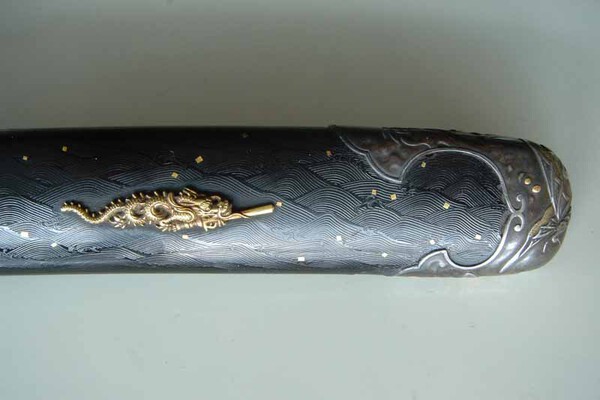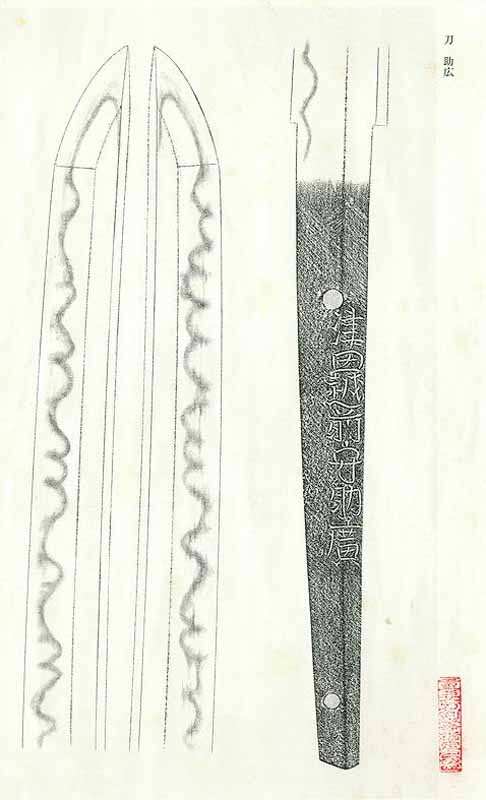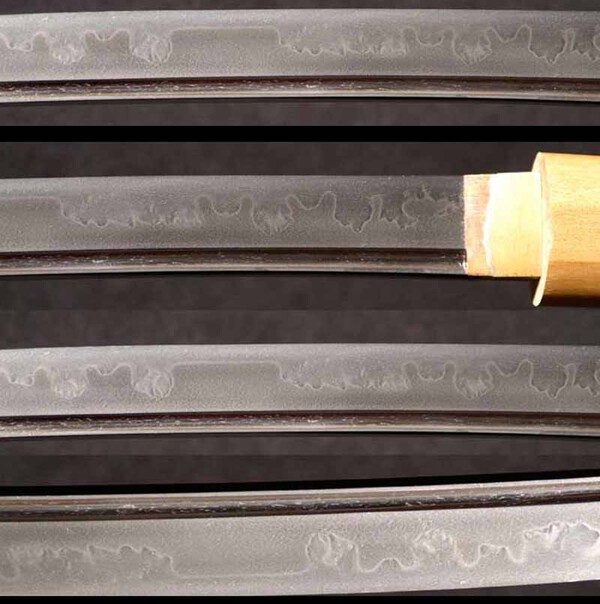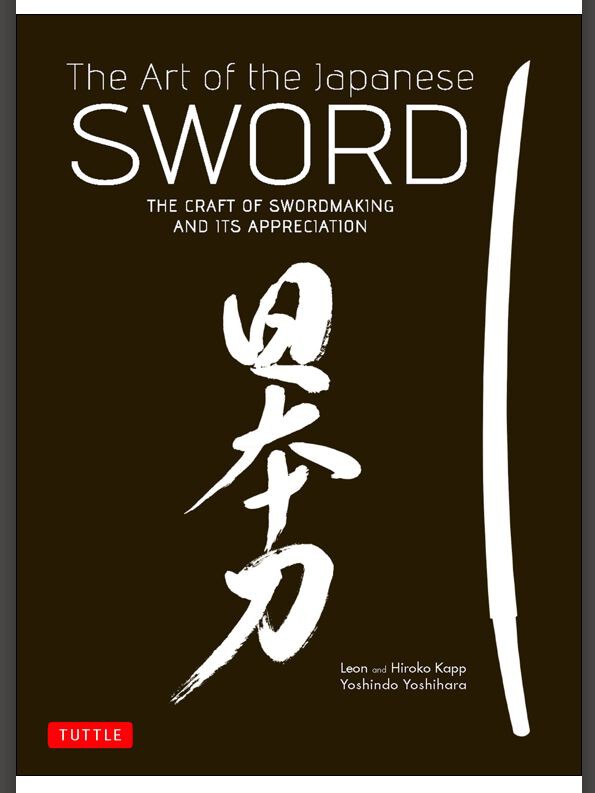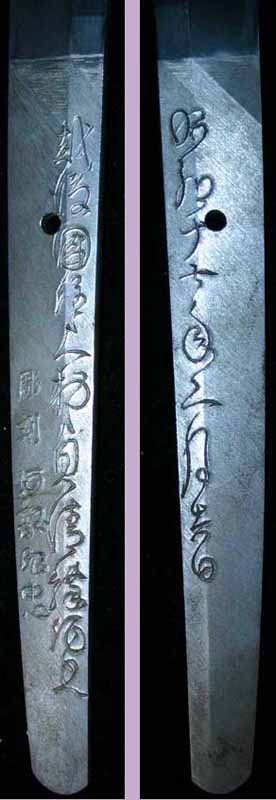-
Posts
1,029 -
Joined
-
Last visited
Content Type
Profiles
Forums
Events
Store
Downloads
Gallery
Everything posted by Eric H
-
This is a interesting evidence how opinions among academics can change over time. The sayagaki by Tanobe sensei, according to the translation, attributes the sword to Nagato Akikuni, to be a son of Choshu Yasuyoshi. The following article is an excerpt from TB No. 592 - Nihon-Koto-Shi 16. Nagato Sa It is the commonly accepted theory that a son of Samonji, Yasuyoshi moved from Chikuzen Province to Nagato Province and then Akikuni became his student. ‘Kokon Mei Zukushi’ says that Akikuni was a student of Samonji. Yasuyoshi is also called Sa Yasuyoshi, therefore, this Samonji must mean Sa Yasuyoshi in ‘Kokon Mei Zukushi’. There is no extant tachi of Yasuyoshi with a mei, but many tanto with mei exist. The theory that Yasuyoshi was a son of Samonji may be accepted, considering his workmanship. There is a possibility that there is another Yasuyoshi, who belongs to the Sa school, inferring from the extant tanto with the mei of Yasuyoshi in a different style. The Oei Era is the earliest production year of Akikuni, but there are his later works with production years of the Eikyo and Kakitsu, so there may be two or three generations of Akikuni. He tempers hamon based on gunome and occasionally sugu-ha with hotsure, but it is difficult to affirm his direct relation with 1st Yasuyoshi. The Nihonto Club Swordsmith Index list dates of several Akikuni which are not in accordance to the above dates. Some pictures of this interesting sword would be very welcome. Eric
-
I don‘t know if your chest falls in the same category. Pictured is a HASAMIBAKO - 62cm x 41cm x 41cm - all sides including the top decorated with Aoi-Mon on the nashiji ground, that was used holding clothes while travelling. Eric
-
I agree with the Tea Service. When it comes to Sword Fittings in Silver than old ideals of Japanese aesthetics must be considered, given someone is willing to internalize this perception. That said, wabi-sabi has nothing to do with esoteric, in this context it is simply the appreciation of a natural patina during aging. Silver Fittings may be given from time to time a slight rubbing with a chamois leather. Silver Kojiri on a Tanto saya late Edo period. Eric
-
Toranba was invented first by Tsuda Sukehiro II. The hamon by Kanetane I is described as to be „notare togari ha maijiri with a resemblance to late Seki“... and from another source „notare mixed with gunome choji or also a hiro-suguha“ Eric
-
How many Tokubetsu Kicho papers have been issued since 1950 to 1982...350‘000...400‘000 or even more? To hold all these Origamis for worthless would mean to throw out the baby with the bath water. As often said caution is advised with big names a Kanetane Ko-Wakizashi 33 cm Eric
-
viewtopic.php?f=1&t=8593 Eric
-
Horimono on a Tanto by Nobuhide, The cherry blossom in places almost touching the habuchi. Carved before or after yakiire ? Eric
-
JuTo 1196 Unju Question to members who had it in hand. What is seen on the photo, are these openings or is it a side effect of the scan? Eric
-
Yasumitsu and Morimitsu - Oei Bizen Yasumitsu‘s hamon is generally suguha, Morimitsu‘s hamon is generally Choji midare. A kantei point is the shape of the pointed boshi that resembles the flame of a candle, often seen on Wakizashi by these tosho. Eric
-
It is the newest edition from 2012 and significantly different to the first edition. Is it possible that the authors publish material that is not based on facts and is out of validity? If you are right and you have spoken at time to Mr. Yoshihara, why again these "facts"?... and btw I‘m not a supporter of Mr. Jacques theories. Eric
-
"Star Stamp means Gendaito and Tamahagane" (from The Art of the Japanese Sword : Leon and Hiroko Kapp - Yoshihara Yoshindo) Eric
-
Kunitaro san, I understand your judgement includes explicitly also the quality of the Horimono... hence this is a late rehabilitation of the overall quality of that Tanto...someone kept it for „silly stuff“...!!! Eric
-
In another thread, Kunitaro-san, finally receiving the requested source of a book, relating to a Oshigata on a Tanto by Nobuhide (kawari deki) announced to inform about the work of Abe Akitada, horimono-shi, at „Kiyomaro school?“. There was a discussion on a Akihide Tanto on this Board, with different opinions on a Horimono by Abe Akitada. Akihide Tanto: viewtopic.php?f=1&t=9093&st=0&sk=t&sd=a&start=0 Kunitaro-san I‘m looking forward to your informations hopefully accompanied with pictures. Eric
-

Muromachi Period Dates Confusion
Eric H replied to Tcat's topic in General Nihonto Related Discussion
1868, the begin of Meiji era is well chosen because it marks a abrupt change from a „middle age“ civilisation to a „modern state“. Subsequently the privileges of the Samurai class were step by step abolished, the demand for swords fell, and as an example Saito Kiyondo retired in 1871 and became a hotelier. Eric -

Muromachi Period Dates Confusion
Eric H replied to Tcat's topic in General Nihonto Related Discussion
I cannot recall it, someday I have made this list for my own usage, as you can see there is little difference compared to other lists, but this is of less importance I think. Erich -

Muromachi Period Dates Confusion
Eric H replied to Tcat's topic in General Nihonto Related Discussion
-
This style of writing is called „sosho“. Why do you not post a pic of the sword‘s nakago at least and more helpful of the entire blade ? Eric
-
An attractive and well preserved Koshirae of the late Edo period as it was worn by the Samurai. A peculiarity of the Toppei Koshirae is the shape of the kojiri as pictured. Toppei Koshirae: viewtopic.php?f=9&t=1784 Eric
-
The difference between Original and Repro http://klefisch.com/index.php?page_id=4 ... emid=19269 Eric
-
Kunitaro san, This is really a surprise. Two Horimono on the same theme, one with finely rendered details seemingly to come just fresh out of the workshop, the other slightly different in the details and with signs of wear, but thought to be cut by the same hand. Both with similar suguha hamon but with different hada. The donated Tanto exhibits in all aspects Nobuhide‘s skill for what he is famous and appreciated. Eric
-
Kunitaro san, Thanks for the informations, much appreciated. My sword is by Saito Kiyondo, a textbook example, ububa, and extremely fine in make. It‘s koshirae dates from the late Edo period in mounts that were actually worn by its last Samurai owner. Very detailed informations delivered by Clive Sinclaire on a Nobuhide Tanto with a jishin-bori as I would suppose, and on Kurihara Nobuhide‘s biography is to read on the new site of The To-Ken Society of Great Britain. To scroll down to „London Meeting Report - 28th June 2012 etc. I would like to correct a neglect on my part, the three great master horimono-shi of the late Edo period are: Yoshitane, Nobuhide and Gassan Sadakazu. BTW Nobuhide tempered also in suguha and I will add later an example, the Horimono in that blade is atobori. http://www.to-ken.com/page.php?type=home Eric
-
Kunitaro san, Thank you for explaining the term „shimi gokoro“. Nobuhide is qualified as to be next in skill to Kiyomaro. When there is a Horimono doubtlessly identified as to be a ato-bori, how much does this affect the value of that sword in percentage to a sword with jishin-bori Horimono. I for one would not have a blade by Nobuhide with an ato-bori, and I must say, the Horimono by Aktidada on the gendai sword by Sadakiyo doesn‘t meet my expectations for a superb Horimono. Possibly the photo is not of best quality. I‘m not familiar with gendai-to, but there are others on NMB. My special interest on this topic is because I own a sword by a tosho of the Kiyomaro Mon. Eric
-
hori dosaku Abe Akitada, perhaps he is known also as Kawabe Akitada, I dont' know Eric
-
Oct 1 : Bonhams appoint Joe Earle as a senior consultant for the Japanese Art Department in Europe and in the USA Eric
-
Kunitaro san, I understand that the presence of „shimi-gokoro“ in a Nobuhide‘s ha (Hamon)? is a feature that the Horimono is most likely jishin-bori. Is this shimi-gokoro visible in the oshigata I have added, or is it only visible when the blade in hands? I add a Horimono by Kawabe Akitada on a blade by Echigo Sadakiyo. Eric




